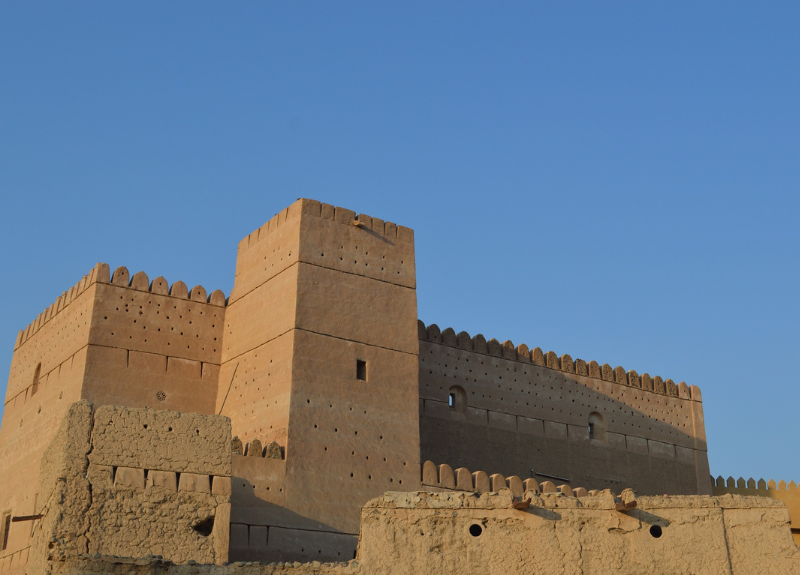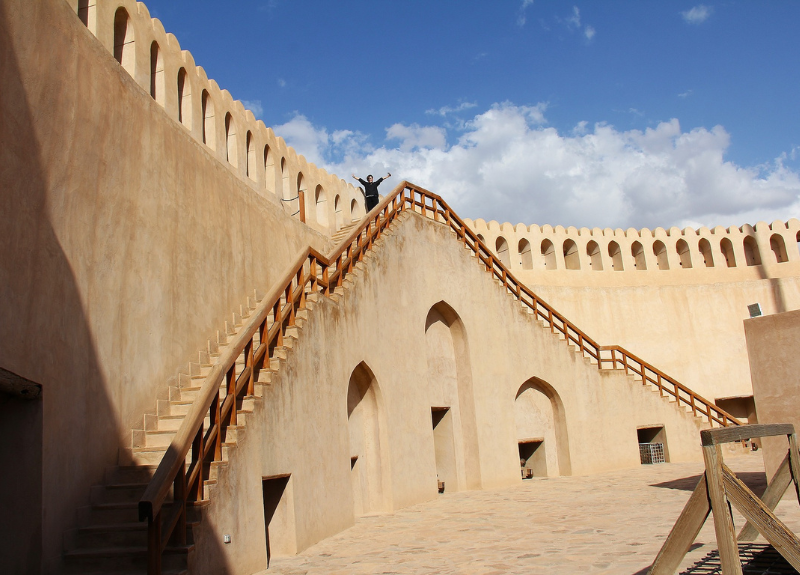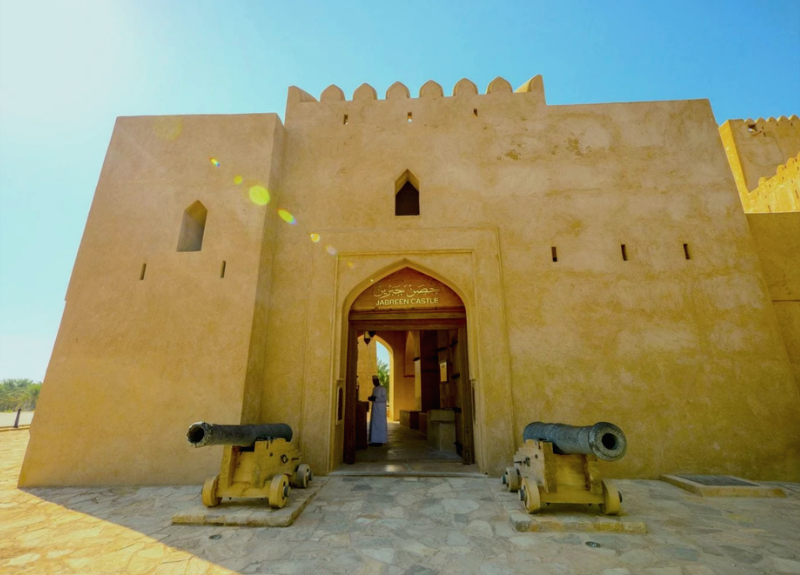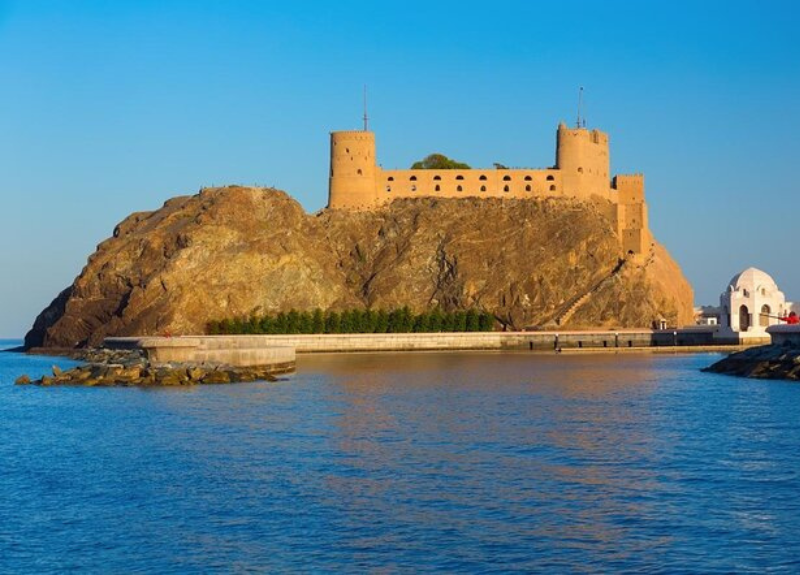
Wherever you head to in Oman, you will notice a number of majestic forts dotting the landscape. Built and rebuilt with time by both many ruling powers including the Portuguese, each of the forts of Oman speak to the history of the country and the construction of the times in which they were built.

This ancient fort with sections dating back to the ninth century is an amazing example of historic Omani architecture. Nizwa Fort has not just the biggest tower in Oman but it is also the only fort in the region to have a cylindrical main tower. The fort also contains many exhibits and artefacts including the fort’s defence mechanisms that help one understand the history of the Nizwa fort and region. Having seven wells, a number of prisons, and massive grounds, the fort is an amazing destination for those that wish to learn about the lifestyle of ancient Omani and the history of Oman. A visit to the Nizwa Fort is incomplete without visiting the adjoining Nizwa Souq. Oman’s oldest Souq(marketplace) and a bustling centre of activity Nizwa Souq is completely surrounded by a wall and clearly separated from the rest of the city. A visit to the Souq is a great way to interact with the locals, experience life in Oman, and pick up some fun souvenirs. The Souq is divided into six distinct areas, from the modern West Souq that is great for souvenirs, to the traditional Arabian market in the East Souq for spices and everyday items to the fresh produce hall, the Craft and Sweets Souq, the Fabric and Textiles Souq, and the Animal Market where livestock is sold on Fridays.
This UNESCO World heritage site is one of the oldest forts in Oman with walls and towers built in adobe, on a sandstone base. The Bahla fort was held by numerous rulers of the region who added and updated the fort over the centuries and the fort and oasis settlement with its perimeter fortification are an excellent example of a type of defensive architectural ensemble of the late medieval period which enabled dominance in the region. The fort is divided into three main areas; the oldest is Al-Qasabah which was built during the middle ages, the enclosed area of Bait al-Hadith meaning ‘new house’ which was constructed in the 1600s and finally the third area of Bait Al-Jabal which translates to ‘mountain house’ and was built in the 1700s.

Built in 1675, the Jabreen fort is one of the best preserved forts in Oman. It has served historically as an important centre of learning and remains famous for its battlements. This three story tall castle, features two towers, and numerous halls and rooms. The castle is one of the most beautiful in Oman with the interiors featuring decorated windows, wooden balconies, arches with inscribed Arabic calligraphy, and breathtaking ceiling artwork.
Sitting atop the mountain, Muttrah Fort has guarded and kept watch over the harbour and city that lie below for centuries. With its origin linked to the first Portuguese Empire, it is one of Oman’s oldest forts, dating back to at least the 16th century. Historically Muttrah Fort was to protect against any approach from the mountains or along the route to Old Muscat and to this date remains one of the most visited sites in the country.
Today, it is open to visitors and demonstrates the historic importance of fortifying such strategic locations like this fort that offer a broad view of Muttrah, the coast, and surrounding mountains.
Located some 200 kilometres north of Muscat and a short drive from the UAE border, the fort ensured the security of the city of Sohar which served as a major port for many traders. The fort is currently closed for renovation.
Less than two hours from Muscat, Rustaq is believed to date back to the pre-Islamic Sassanid era.But it is not just the fort's incredible history that is the reason behind its popularity. The fort of Ar Rustaq is a picturesque structure, distinguished by its four towers, exquisite architectural features, the use of carved wood and a historic mosque. An ancient falaj continues to flow under the fort, while the highest courtyard houses the burial site of Imam Nasir and one of his successors. Beyond the walls of the fort, the abundant date trees, scenic wadis, and wealth of historic sites has earned Rustaq a place in the hearts of all visitors.

The historic forts of Al Jalali and Mirani date back to the 16th century, and while they are closed for entry to the general public they define the cityscape of the Omani capital. The forts were formerly used as defence fortresses, and were constructed by the Portuguese during the 16th-century colonial period. Visitors should come view them at sundown to capture the best views.
All Rights Reserved © Zahara Tours